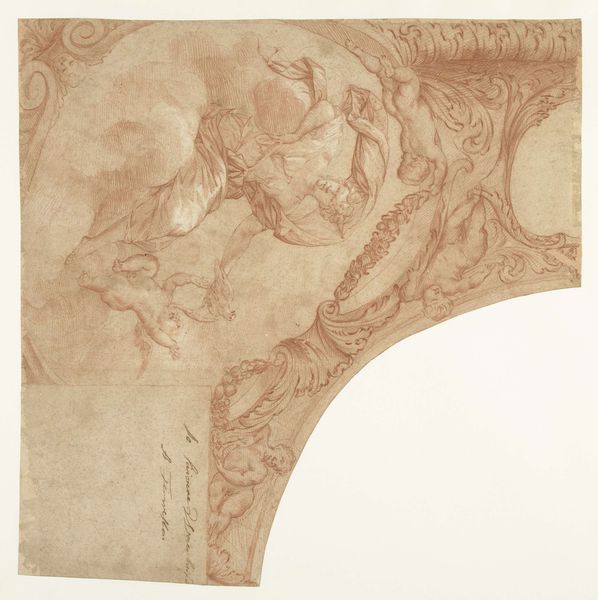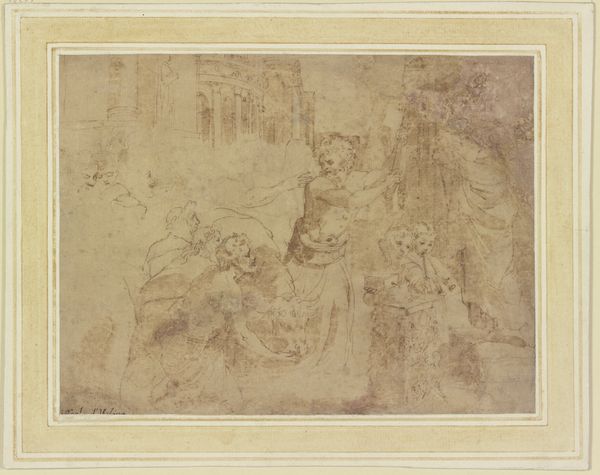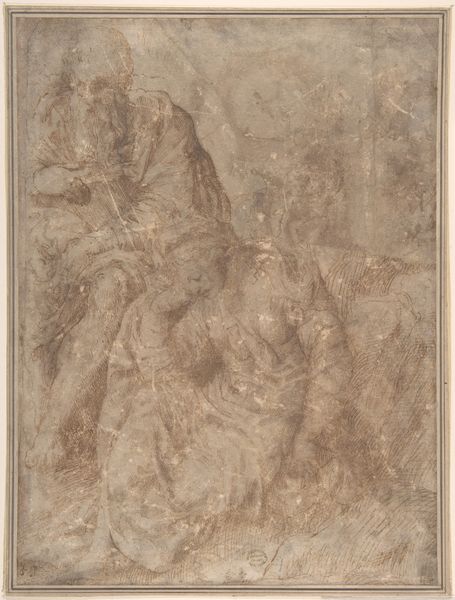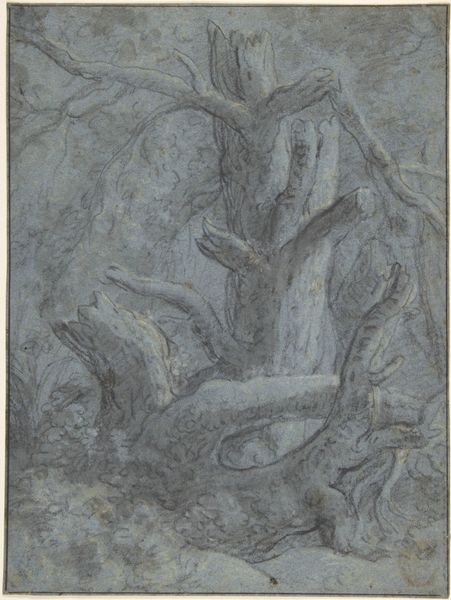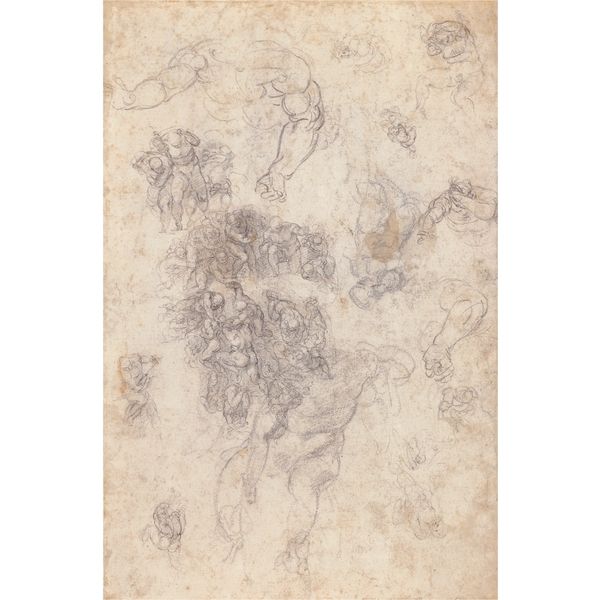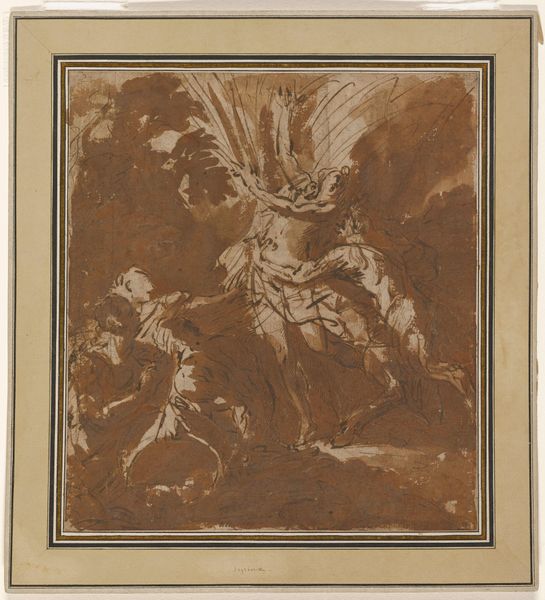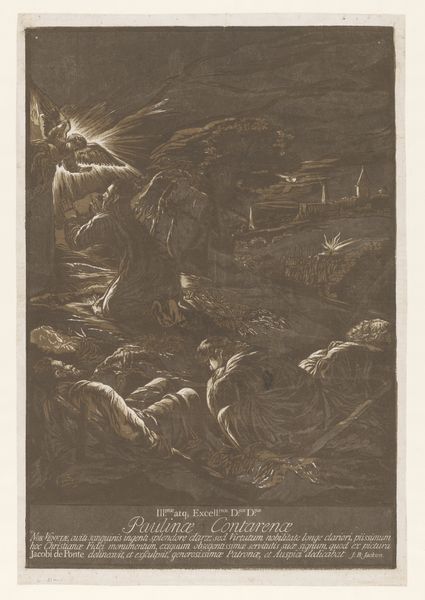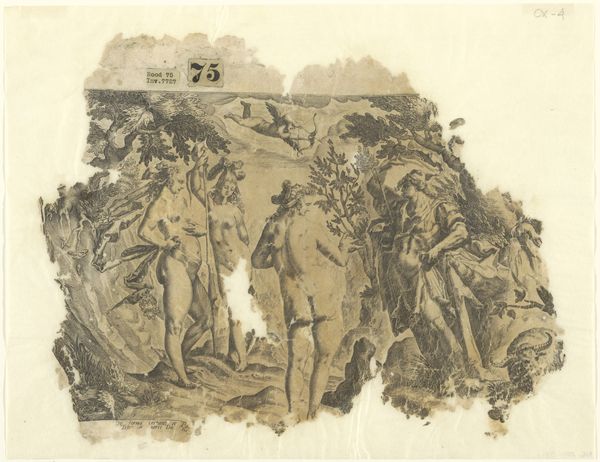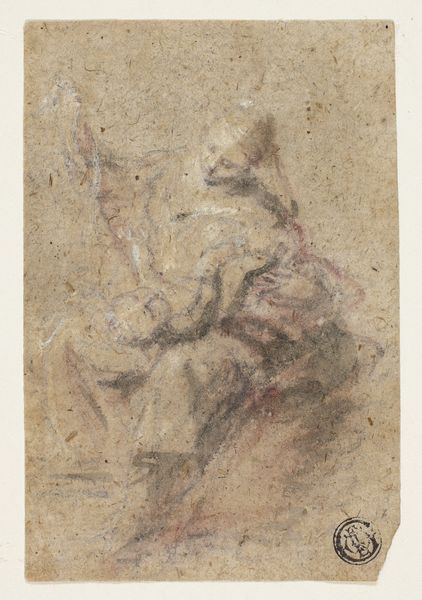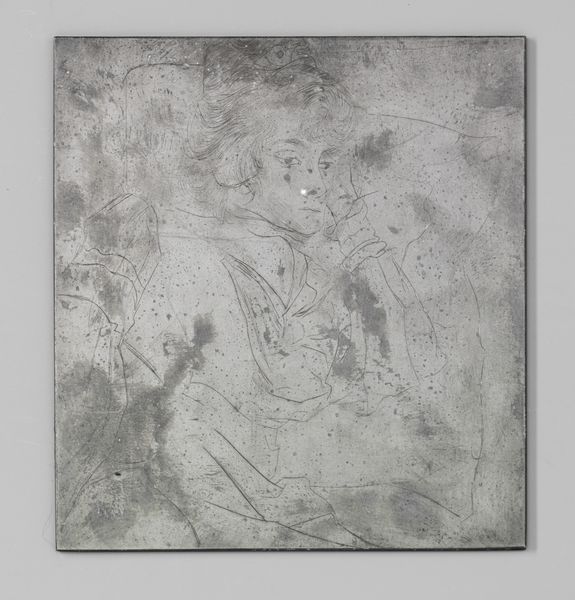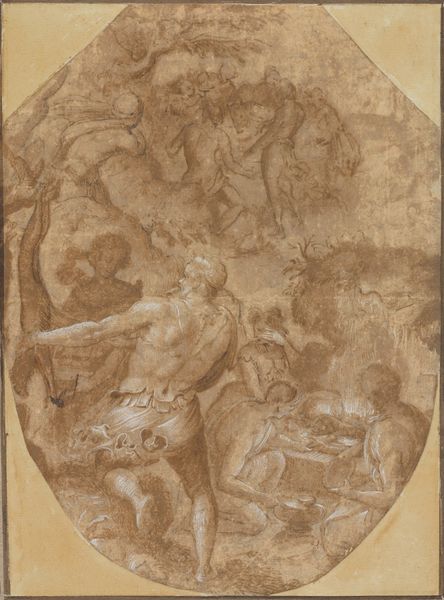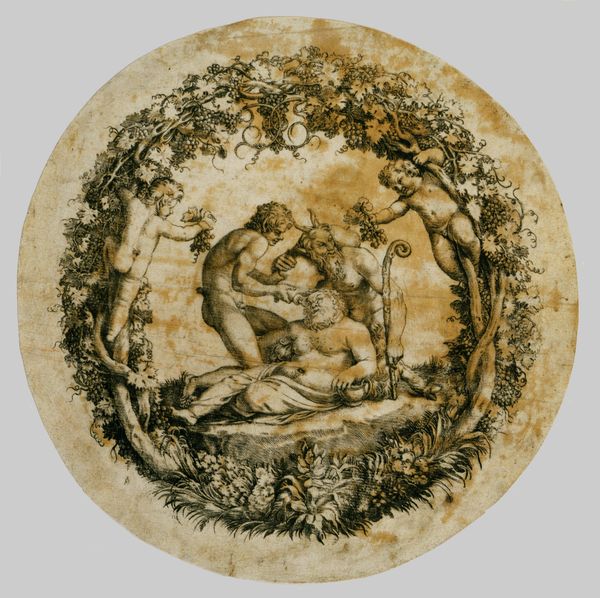
drawing, tempera, chalk
drawing
high-renaissance
organic
tempera
13_16th-century
chalk
organic texture
Copyright: Public Domain
Curator: I find this artwork utterly captivating. There's a swirling energy, a sense of something sacred being captured in a fleeting moment. Editor: Well, the muted tones definitely lend a sense of drama, but to me it mostly evokes the feeling of incompleteness, almost as though I were peering into a lost world. I wonder if it relates to the way the Renaissance conceptualized imagery and art-making. Curator: Precisely! What you're reacting to might be better understood by recognizing its historical moment. This is "Mystische Vermählung der Heiligen Katharina," or "Mystical Marriage of Saint Catherine," created circa 1525 by Michelangelo Anselmi. The piece is rendered in tempera and chalk, giving it that unique organic texture that so affects us both. Editor: So, Saint Catherine… the narrative already signals power dynamics and historical relationships that continue to inform gender studies and political discourse today. This imagery often enforced specific patriarchal narratives. Was this a common theme, artistically? Curator: Indeed. Depictions of Saint Catherine, especially her mystical marriage, were incredibly popular throughout the Renaissance. Anselmi, influenced by the High Renaissance style, was engaging with and contributing to that tradition. Considering that art of the time served heavily as visual propaganda, what was the significance of seeing a woman of such noble birth enter into communion with the divine in the late 15th and early 16th centuries? Editor: Good point! What I find interesting is the institutional context. Pieces like this affirmed established religious authority, becoming objects of reverence—art wasn’t always democratized; who got to view such things really mattered. This was displayed in the Städel Museum, how did its public reception shift over time? Curator: And it's through museums that the conversation extends, hopefully opening dialogues about not just the saint, but the gender roles of the time, who had access, and the complex power structures embedded in this artwork. Editor: Absolutely. It seems simple on the surface, but "Mystical Marriage of Saint Catherine" offers endless insight into gender, history, and the role of art within shifting social fabrics. Curator: For me, diving into works like these reveals so much about where we’ve been and frames where we’re heading. Editor: And for me, remembering the institutional history helps us contextualize modern interpretations. A really enriching piece.
Comments
No comments
Be the first to comment and join the conversation on the ultimate creative platform.
